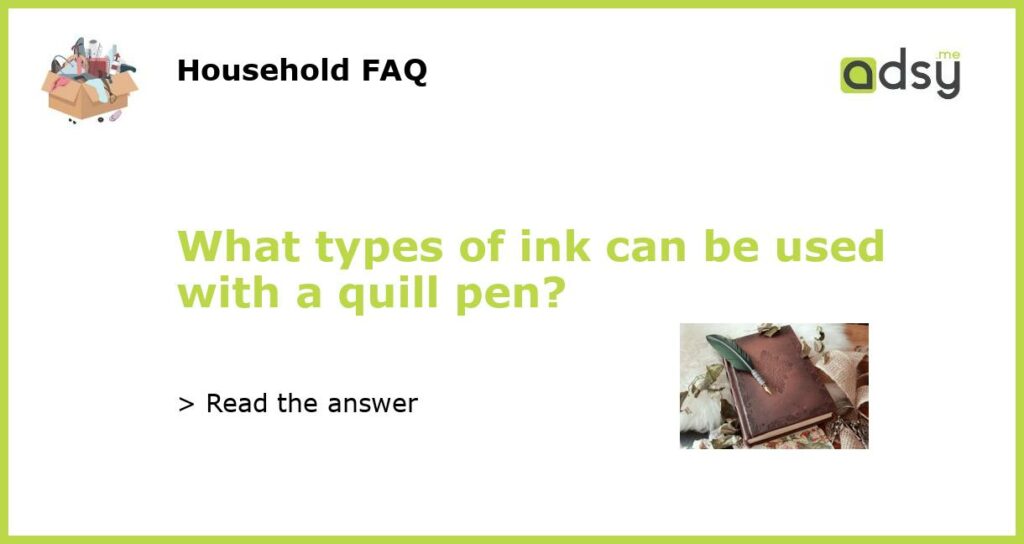Understanding the Types of Ink That Can Be Used with a Quill Pen
If you are fond of using quill pens, you must be curious about the different types of ink that can be used with them. Quill pens have been around for centuries as one of the oldest writing instruments, and writing with them can be a unique experience. However, selecting the right ink can make a significant difference in the quality of your writing. Below are five types of ink that can be used with a quill pen.
Iron Gall Ink
Iron gall ink is one of the oldest ink types and is commonly used with a quill pen. Iron gall ink is made from iron salts and tannic acid, resulting in a liquid that is watery and dark. Iron gall ink is also known for its water resistance and permanence, making it a perfect choice for archival documents.
Fountain Pen Ink
Fountain pen ink can also be used with a quill pen. Fountain pen ink is a water-based ink that typically comes in a variety of colors. It is preferred by many writers due to its smooth and consistent flow, making it perfect for quill pens that require gentle and steady pressure. Fountain pen ink is also available in a variety of bottle sizes, which is suitable for those who write regularly.
India Ink
India ink is a popular choice for quill pen users because of its rich, deep color. It is a carbon-based ink that is water-resistant and dries quickly on paper, making it perfect for sketching. However, since India ink is relatively thick, it must be thinned with water before use with your quill pen.
Calligraphy Ink
Calligraphy ink is specially designed for calligraphy work, which also makes it perfect for use with a quill pen. Made from a combination of gum arabic, water, and pigment, calligraphy ink produces crisp, sharp letters. It comes in different colors and is fast-drying, thus reducing the possibility of smudging.
Walnut Ink
Walnut ink is a natural, brownish ink that is made from black walnuts or their hulls. It gives a subtle tone and texture to your writing, making it perfect for adding character and dimension to your work. Walnut ink dries quickly, and it is water-soluble, meaning that it can be thinned after it has dried on the page, thus creating unique effects on your artwork.
In conclusion, choosing the right type of ink for your quill pen comes down to the results you want to achieve. Each of these five inks has unique properties that can affect your writing style and the quality of your work. Regardless of what you choose, have fun exploring the many possibilities of using a quill pen.






